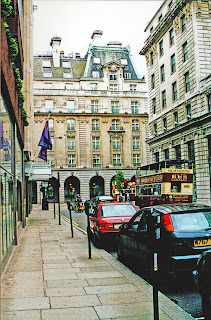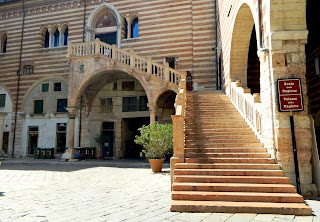
"I miss riding those fast trains in Japan... 'cause I'd never seen a train that fast in my life."
- Ike Turner
I am often disappointed by the arguments people put forth regarding the expansion of rail service in this country. Particularly opposing High Speed Rail (HSR).
 |
| TT - Under the Channel Tunnel |
 |
| Italy's Frecciargento |
Some of them are simply NIMBY. Don't want a project -- any kind of project -- let alone something with a bunch of zeroes in the price tag. They're not opposed to HSR, they're opposed to anything which costs money.
Then, there are those who are concerned it's too big, too expensive, too invasive. That it will take monies away from other projects they like better. These people, some of them driven by heartfelt, if misguided, opposition based on a misunderstanding of the economic model, or perhaps from a rejection of the systems' projected return on investment on a MACRO level, really truly want to halt the development of the train regardless of the benefits it will likely bring (based upon the success of the models in Europe and Asia).
(By Macro I mean the economic impact as a whole, not simply "it costs this much to build and this much to operate". A true cost models includes sustained earnings and economic impact on a greater scale. A great example is the money-losing CW television network. The parent companies lose a lot of money on it, however make MORE money from the programming they produce and sell to it that offsets those losses. Taken as a macro, the network pays back significant dividends to its owners despite losing money.)
 |
| Paris' Gare du Nord Station |
Others have a much more insidious agenda, and these are the folks who stand to lose financially from such a system. Because trains are far more economical per passenger mile, they are a threat to the gasoline and automotive industry while thrives based upon continued gas consumption of vehicles between California's major cities. A vast network of gas stations, automotive repair, sales and maintenance exists. Airlines are fighting tooth and nail because they rather obviously have the most to lose against a competitor such as a thriving HSR service.
One of the primary arguments made against California's system haas been cost, and there's no doubt it's an expensive proposition. Somewhere between $70B-100B to build the general infrastructure. That's a lot of money under any circumstances, but particularly in difficult economic times. Of course, if the money was being carted out into the Pacific Ocean and dumped into the Monterey Deep Sea Canyon just off the coast this would be an entirely valid concern. But as you no doubt realize, the money is actually spent on wages and salaries and products right here in the Golden States and other US states. It's an economic engine just as important as building a road or bridge or other public infrastructure elsewhere.
Importantly, the rail, if done correctly, would remove enough cars from the road (and potentially aircraft from the air) to more than offset the cost of building infrastructure for those forms of transportation, each of which is commensurate to the long term cost of the rail project. (CalTrans, our state agency tasked with maintaining transit infrastructure, alone has a statewide budget of $12B in 2013, for example. This doesn't include the money spent by cities and counties on their own road maintenance.) Rail efficiencies are driven after the initial construction costs, and would be amortized over the decades of service and upgrades.
 |
| View from a HS Train |
 |
| View from a jet |
Not only is rail service efficient and effective, it is far more comfortable than the flying busses employed by the airlines. On a train you can get out of your (much larger than airline-style) seat, stretch your legs, stand and talk, walk back to the diner car for a nosh (or drink) and generally travel in a good deal of relative comfort.
 |
| Seating inside a plane |
 |
| Seating inside a train |
One thing I have noticed is that people are more than willing to argue things from a theoretical standpoint, or even solely based on a spreadsheet and heresay. I have benefitted from traveling extensively on the European trains -- the TGV, Thalys, Eurostar and Frecciargento in particular -- and can testify to the extreme difference in the travelers' experience between that mode of transportation and the challenges presented by air travel these days.
And lastly, I would be remiss if I didn't mention the views from =a train. Aircraft loft usup and over some truly beautiful vistas. From 30,000 feet the ground tends to look like a patchwork quilt, at best. From a rail perspective you can truly see the land for what it is: whether mountains, farms or cities, the view from the large windows of a train give you far more a sense of a land than does a casual flight over it. As regular readers know, I am insist on getting a feel for a place, a taste of the views and culture which surround me. This does not exist at 30K feet, and the experience aboard SAS or Air France or American Airlines is more about what occurs inside the cabin (or, these days, what does NOT occur) than it is what is going on outside the windows.
From a train you can see the world at eye level.
I am excited about the prospect of finally having a true world-class rail transportation system in the US, and even happier it's here in my home state. Having driven and flown between LA and the Bay Area repeatedly, I am looking forward to having a viable third option for my transit dollars.
Just sayin'.
Links
CALIFORNIA HIGH SPEED RAIL AUTHORITY
LAS VEGAS X TRAIN
5 REASONS THE CHSR IS THE BEST PUBLIC WORKS PROJECT IN THE US
































